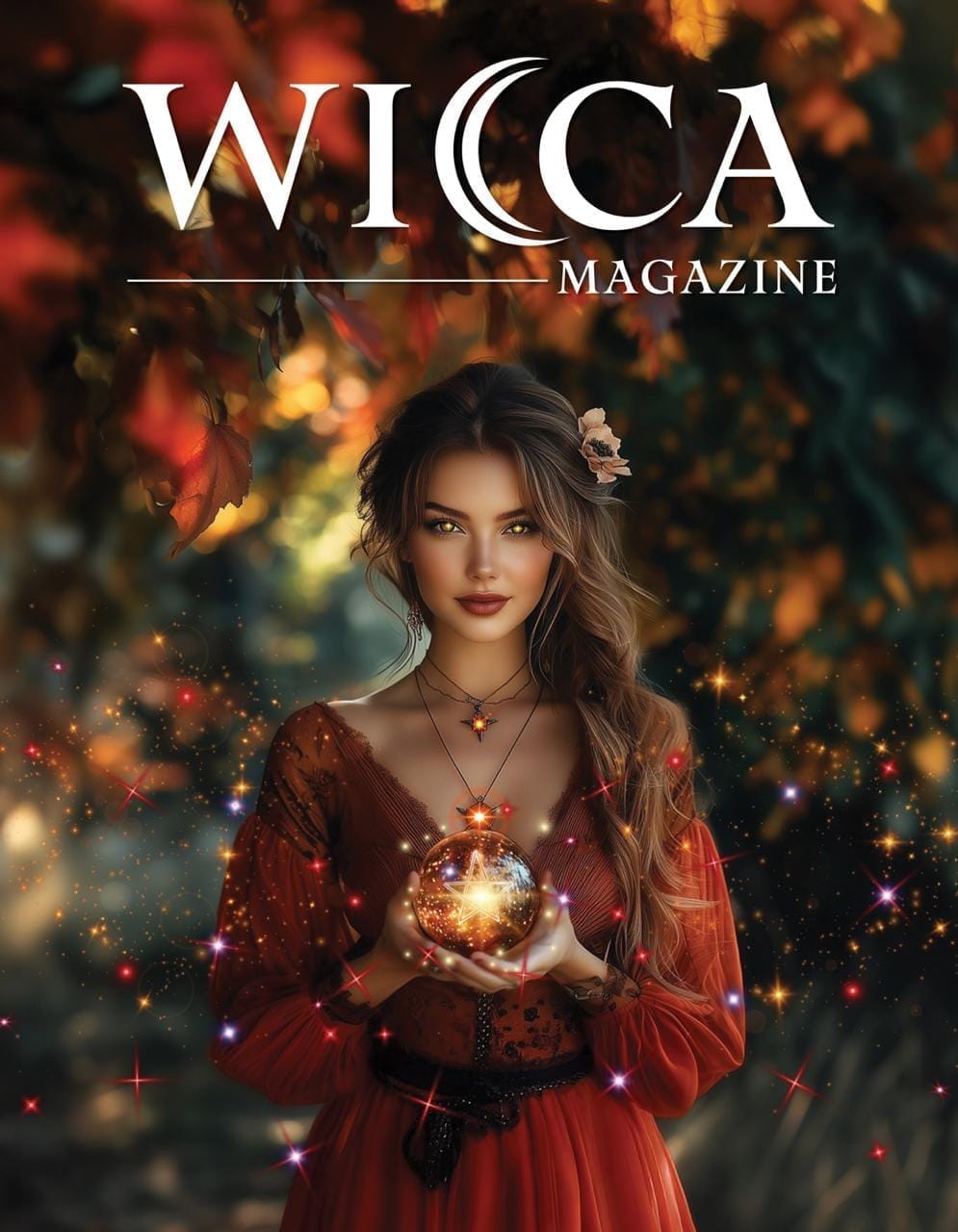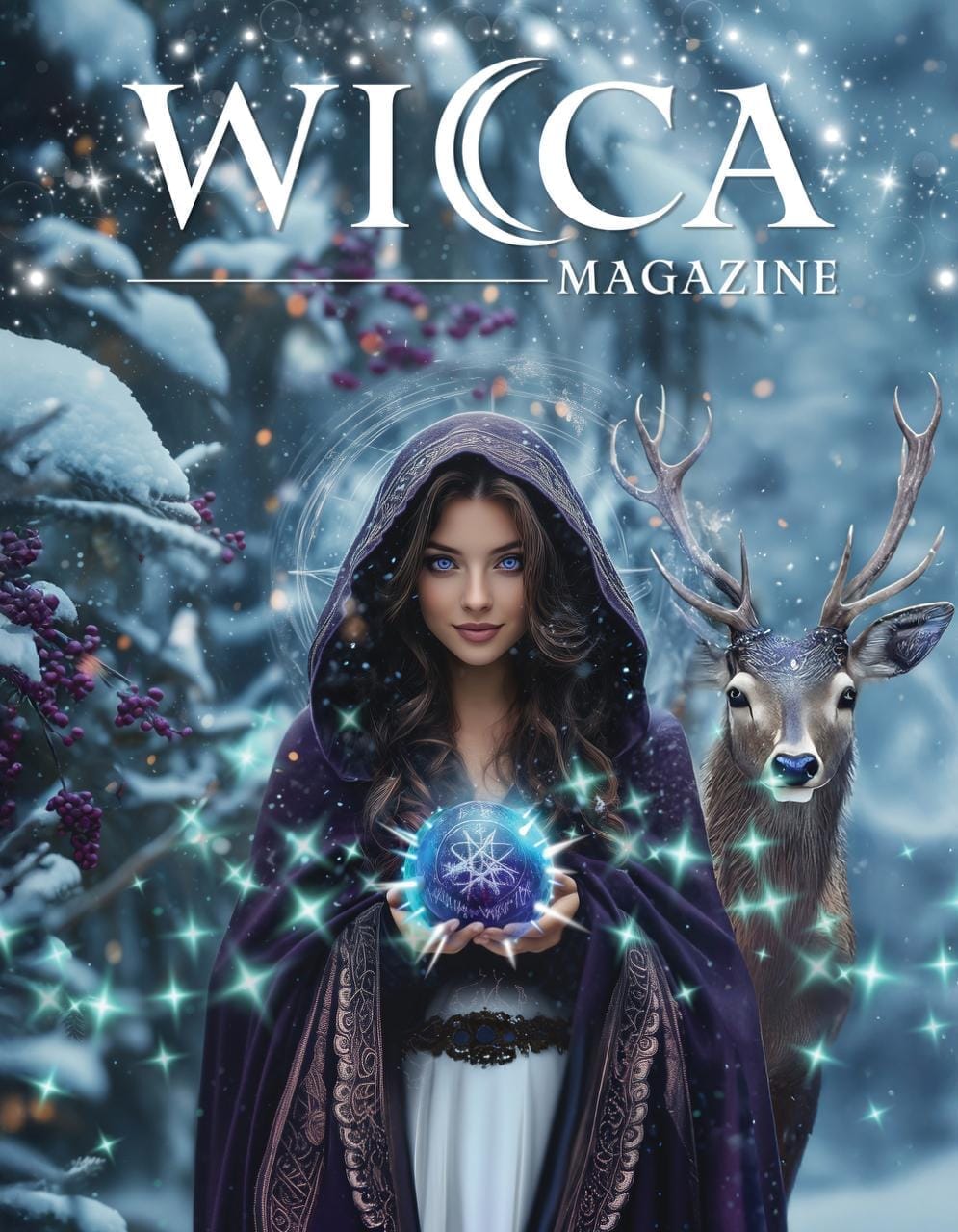


Unlock the Magick of Yule! - Your Wicca Magazine Issue Awaits
Step into the season of light with Wicca Magazine. Each digital issue is a sacred offering of spells, rituals, and Wiccan wisdom — honoring ancient paths and empowering your modern magick. Your craft, your journey, your magickal sanctuary.
Eleanor Bone, also known by her initiated name of Artemis, is a controversial figure in the world of witchcraft and paganism. Her name is often mentioned in discussions of traditional witchcraft, folk magick, and the occult, and her teachings and practices have been the subject of much debate and speculation.
Despite this, little is known about her life and works, as she largely kept to herself and did not leave behind many written records of her teachings.
However, we have managed to piece together the portrait of a witch who preferred the background to the center stage. A witch who cared deeply for the craft and only sought to support, nurture, and uplift anyone who showed potential and ability with the supernatural arts.
So let’s present the magickal life of the High Priestess we know as Eleanor Bone.
Eleanor was born on December 15, 1911, in a small village in England. She would become affectionately referred to as “Ray” by her friends and family though the reason for this is unknown.
She was raised in a traditional Christian household by her mother, Emma, a schoolteacher, and her father, Charlie, a golf club administrator.
From a young age, she had an interest in the occult and the supernatural. She was said to be able to speak to animals telepathically and even convinced a rat to stop eating the food from out of their cupboards.
Although this story cannot be verified, it is still fun to think about. Who wouldn't love to be able to simply convince rodents to stay away from one's home and food supply?
Eleanor was fascinated by stories of witches and magick and often spent hours reading about these subjects in the local library. During the war, she and her family were staying in a bomb shelter during the Blitz in London when she met a couple who practiced witchcraft.
She spent her entire time down there learning everything she could about Wicca, which proved a nice distraction from the chaotic world around her.
After the blitz was over, Eleanor actually moved in with the couple who would go on to tutor her in the art of witchcraft. The couple eventually initiated Eleanor into their coven in 1941, and she stayed with them until 1945, when she was ready to go out on her own.
Eleanor began to explore the practice of witchcraft and the occult more deeply. She studied various texts on the subject, including the works of Aleister Crowley, Dion Fortune, and other prominent figures in the field.
She also traveled to different parts of the country, seeking out other practitioners of witchcraft and magick to learn from them.
It is unclear how the series of her life transpired until she emerged on the Wicca scene, but at some point, she married a man named Jacob Posner and had two children named John and Francesca.
Her marriage eventually fell apart, and it is unclear how many more times she married. On the wedding certificate to her last husband, William Bone, she listed her last name as Newton.
It is interesting to note that Bill was 16 years her junior, something quite unorthodox for the time. Bill and Eleanor were married in 1958 in a quiet ceremony.
Eleanor and Bill eventually settled in a small village in the countryside, where she lived and practiced as a solitary witch.
She became known in the area for her knowledge of traditional witchcraft and ability to perform powerful spells and rituals.
She was considered by many to be a powerful and skilled practitioner and was often sought out for advice and guidance by those in the community.
But, while that quiet and cozy life was appealing enough, Eleanor wanted more.
She felt deeply that there was much more to learn, and she continued to seek out those who could help her learn everything she could.
It is not exactly clear when Eleanor first approached Gerald Gardner about witchcraft, but it was most likely sometime between 1959 and 1960.
She wrote a letter to Gardner expressing her interest in joining his Bricket Wood Coven. Gerald sent her to the coven, where she realized it wasn't quite the fit she had hoped it would be.
Most of the members were in their twenties and fully enthralled in the political and cultural revolution that the 1960s were famous for. But Eleanor was a rather conservative woman who held to traditional values.
However, despite the mismatch, Eleanor was still initiated into the coven though they would not be able to offer her much guidance after that.
So she went back to Gardner, who personally initiated her into the 2nd and 3rd degrees. After that, she went on to start her own covens.
She spent the next two decades running her own coven and appearing sporadically in various local newspapers, where she would attempt to add more dignity to the public perception of the craft.
She worked very hard to clean up the image of Wicca and make it more accessible to the average person.
When Gardner died in 1964, it became time for his high priestesses to take the reins and guide Gardnerian Wicca forward. Those priestesses were Monique Wilson, Patricia Crowther, and Eleanor Bone.
Unlike the other two, Eleanor did not take to the spotlight with such ease, but nevertheless, she did her best to bring only the most glowing of publicity to the craft.
Eleanor also stood strong against people she perceived to be against the purity of the craft. In 1969, she and Crowther came out publicly against Alex Sanders, who had recently declared himself “King of the Witches,” which was against everything they believed.
They also refuted his claims that he was descended from a hereditary line of witches, something he could not prove yet still espoused.
Despite her reputation as a powerful witch, Eleanor was a very private person and kept to herself. She rarely spoke about her beliefs or practices and was known for her secrecy.
Some say she was a traditional hereditary witch who handed down her knowledge and practices from generations before her. Others claim that she was a self-taught practitioner who developed her own unique system of magick.
Eleanor's teachings and practices have been the subject of much debate and speculation. Some say that she was a traditional witch who followed the principles of the old religion and the worship of the ancient gods and goddesses. Others claim that she was more interested in the occult and the practice of ceremonial magick.
Some have also said that she focused on the practices of folk magick, using natural elements, herbs, and charms to perform spells and rituals. Her work was also said to have been heavily influenced by the principles of the Kabbalah and Hermeticism.
Legacy
Despite her reclusiveness, Eleanor left behind a small group of followers who continue to practice her teachings and methods of spell work. They consider her teachings powerful and effective and see her as a powerful figure in the world of witchcraft and the occult.
Many of her followers consider her the “Matriarch of British Witchcraft.” She founded covens all over England in the early 1960s and remained busy with them until her final days. But to our knowledge, there are no published works by Eleanor Bone.
She was known for keeping her teachings and practices private and did not leave behind any written records. She was a solitary practitioner, and it is believed that her teachings and practices were passed down verbally among her followers rather than through published works.
Eleanor passed away in 2001, but her legacy lives on through her teachings and the memories of those who knew her. Her teachings and methods of spellwork have been passed down from generation to generation by her followers.
Even though many of the stories about Eleanor may be embellished, her impact on the practice of witchcraft and the occult cannot be denied.
Eleanor Bone was a mysterious figure in the world of witchcraft and the occult.
Despite her reclusiveness and lack of written records, her teachings and practices have been passed down through the generations by her followers. Her legacy continues to be felt in the world of witchcraft and the occult, as her teachings and methods of spellwork are still studied and practiced today.
Whether or not Eleanor was a powerful witch or a mythological figure, her impact on the craft will continue to be felt for generations to come. But one thing is for sure: Eleanor played an important part in reviving contemporary Wicca as we know it today.
Most Gardnerians can trace their roots to one of Eleanor's covens established throughout England. And for that, we thank her for her contributions.